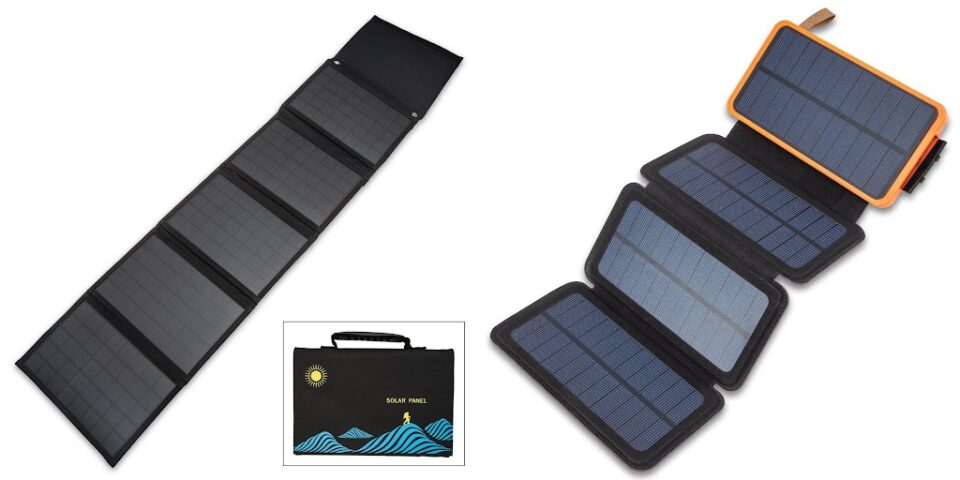Being able to get access to a little electricity, even just for charging laptops or mobile devices, is critical when the power goes out – or when you’re on the trail.
Fortunately, there are some creative and unique ways against getting inadvertently unplugged, and one of the best of them is a portalable solar panel.
These little devices are just what they sound like – a little power bank with one (or several) microcrystalline solar panel charging faces that can produce a charge just from exposure to sunlight.
But they can be expensive, so how do you know you’re getting your money’s worth? Here are a few ways to evaluate them.
Table of Contents
mAh Rating
All else being equal this is one of the most important things to look at as it will give you some estimate of how much charge the device will hold.
The higher the mAh rating, the better. A common rating is 10,000 mAh, which should be able to charge most iPhones 2 to 4 times – this can vary but it just serves as a frame of reference.
Impact Rating
Some portable solar panels are also impact resistant. Oftentimes they are just labelled as such, sometimes they are actually given an impact protection rating indicating the height from which they can be dropped without damage. Anything more than a meter is fine for most applications.
IPX Rating
Some other portable solar panels will be given an ingress protection rating, or IP rating, which measures how well the device is sealed against particulate and moisture intrusion.
The first number in an IPXX rating measures ingress protection against particulate matter (dust) and the second against moisture. Look up an IP chart for more details, and know that higher is better.
Inputs and Outputs
Most portable solar panels can also be used as a regular battery bank and charged just like any other. The more inputs and outputs, the better, as greater flexibility will make it easier for you to charge the device with respect to what cables you have on you. Common ports include USB and USB-C ports as well as micro-USB ports in some cases.
What Else It Has
You’ll also want to take a look past the basics at what other features the solar device in question has. Here are a few common features that add value:
- Carabiners or clips that make the device easier to carry
- Integrated LED lights that can be used in the event of a blackout
- Charging indicator lights so you can see the charge level at a glance
- In the case of larger models, a folding design that makes the device more portable.
Remember, this list is not complete – it’s just a place to start.
Where to Get Quality Portable Solar Panels
While portable solar panels can offer a lot of value, it’s important to remember that two is one and one is none. Therefore, you should also carry a few other power banks, as well as crank-powered lights or radios, to make sure you are never completely without the ability to produce a charge.
If you’re looking for survival gear like this, visit CH KADELS. You’ll find a whole lot to keep your attention including plenty of cool and unique survival tools and other camping supplies.
For more information about Survival Manuals and Bushcraft Gear Please visit: CH Kadels.

